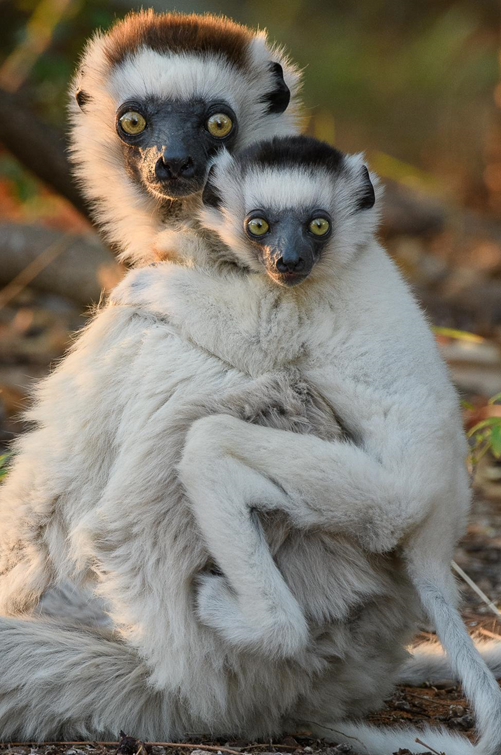The mammals of Madagascar have seen many human induced extinctions while increasing human influence mean many more may follow. We show that adding to the few million years of evolutionary history that have already been lost, many more millions of years would be needed to regain the lost diversity if proper conservation measures are not employed.
Views 3242
Reading time 4 min
published on Aug 14, 2023
The island of Madagascar is one of the world’s most important hotspots of biodiversity, harboring diverse species from baobab trees to lemurs and even the world’s smallest chameleon, most of which are found nowhere else on Earth. In fact, around 90% of its species of plants and animals occur only on the island. This is because the island has been on its own evolutionary path for nearly 90 million years since its isolation from mainland Africa, as well as its incredible size nearing continental in scale, which harbors an impressive diversity of ecosystems. Unfortunately, the arrival of humans and their influence on ecosystems have harmed Madagascar’s biodiversity, and currently, increasing pressures are posing more threats than ever.
Madagascar suffered various extinctions including giant lemurs, elephant birds and dwarf hippos after humans first colonized the island. However, unlike most other islands across the world, Madagascar’s biodiversity is still relatively intact. More than two hundred species of mammals still live on the island, including unique species such as the fossa, the ring-tailed lemur, and the sucker-footed bat. Alarmingly however, over half of the mammal species on Madagascar are currently threatened with extinction. These threats are primarily attributed to human influences such as habitat destruction, climate change, and hunting for the bushmeat trade. Colonization of species from the mainland as well as the evolution of new species may eventually compensate for historical and potential future losses.
We examined from an evolutionary perspective how much humans have driven Madagascar away from its natural state, as well as what is at stake if environmental change remains unhalted. Our team calculated the evolutionary return time: the time it would take for Madagascar to regain through natural processes the mammal diversity that has been lost since human arrival, as well as that which we currently stand to lose. We built an unprecedented dataset describing the evolutionary relationships of all species of mammals that were present on Madagascar at the time that humans colonized the island some 2500 years ago. Our dataset includes species that have already gone extinct and are only known from fossils, as well as all currently known living species of Malagasy mammals. For all extinct species, we assessed whether extinction was likely caused by human influence or not. We additionally collected information on the extinction risk of species that are still present on the island from the red list of threatened species of the International Union for the Conservation of Nature (IUCN), as well as how their extinction risk has changed in the past 10 years. We used a computer model which could estimate the natural rates of colonization, extinction, and speciation of mammals on Madagascar using our dataset. Using this information, we performed computer simulations to assess how long it would take to regain the diversity that has been lost since humans arrived on Madagascar. We applied the same method to estimate how long it would take to regain the currently threatened diversity by assuming in the simulations that all threatened species are extinct. Finally, we assessed how much that number has increased in the past 10 years.
Our models show that it would take approximately 3 million years to regain the number of mammal species that were lost from Madagascar in the relatively short time since humans arrived. However, if currently threatened mammal species go extinct, it would take much longer: about 23 million years of evolution would be needed to recover to current day biodiversity levels. Just in the last decade, this figure has increased by several million years, as human impact on the island continues to grow. What we found for Madagascar is much longer than what previous studies have found on other islands, such as New Zealand or the Caribbean. Our results suggest that an extinction wave with a deep evolutionary impact is imminent on Madagascar unless immediate conservation actions are taken. This underlines the potential gains of the conservation of nature on Madagascar from a novel evolutionary perspective: adequate conservation action today may still preserve over 20 million years of unique evolutionary history on the island. To achieve this, we believe a sustainable future for Madagascar’s mammals is only possible with the sustainable socio-economic development of local human communities. Additionally, it should be a priority to reduce forest loss in the remaining pristine natural habitats, as well as limiting hunting for bushmeat. We already knew that Madagascar was a hotspot of biodiversity, but our study puts into evolutionary context just how valuable this diversity is.
Original Article:
Michielsen, N. M., Goodman, S. M., Soarimalala, V., van der Geer, A. A. E., Dávalos, L. M., Saville, G. I., Upham, N., & Valente, L. (2023). The macroevolutionary impact of recent and imminent mammal extinctions on Madagascar. Nature Communications, 14(1). https://doi.org/10.1038/s41467-022-35215-3
 Evolution & Behaviour
Evolution & Behaviour



